A Year in the Garden
- Natalia Kokotou
- Jun 16, 2017
- 5 min read

Last June we started our Permaculture project, transforming our muddy field into an edible paradise.
The children helped at every step of the way, digging, planting, watering and harvesting; relishing each phase of the development and the garden through the seasons.
Raised beds: Working with soil
The project inevitably starts with a mud bath as we lay out the beds and build up the soil. But, as the landscape becomes more articulated, there are many more chores suitable for little hands.
There are a lot of rules as well, but the children are quick to comprehend and follow them. As a result, they are very quick to point out to others when a wrong step is taken. They are careful to follow the paths and not step on the beds; they water at the roots and take care not to wet the leaves. They don’t pick anything from the garden without asking. They are delighted when the time comes to collect something they have seen growing from seed, to taste it and take it home to show or, even, just to pull up weeds or lettuces that have shot into flower and feed them to the animals.
When the time comes to plant a new bed, the children take part in the whole process from beginning to end. They stand on the broad fork to press it deep into the soil and look for worms as the ground is turned; we discuss how these help nourish and aerate the soil. Next, the children help load the wheelbarrow with compost and spread a thick layer over the bed, feeding the worms, feeding our earth and our plants. Everybody chips in, shovelling, filling the wheelbarrow, pushing it around and raking the soil to make a smooth bed ready for planting.
Building Raised Beds
Our water comes from a well high up on the vineyard.
It comes straight down to our garden, under high pressure from the difference in altitude and out of taps strategically located around the perimeter.
September is still sweltering, so willing water-bearers trot along the paths, slopping water from tiny watering cans to empty their contents over the roots of the thirsty young plants. We talk to the children about the importance of saving water; we show them how to fill the cans half-way so as to avoid spilling it. We shut the tap in between filling cans so it doesn’t run wastefully.
The children help spread straw over the soil on the beds to avoid losing water through evaporation. Over time, we dig our hands under the straw and marvel at how moist and soft it is in comparison to the hard baked soil that is exposed to the sun. On the paths, we spread wood chip that we salvage from our local firewood supplier. The wood chip protects the soil from being compressed and the wildlife that lives in it. When wood chip isn't available we spread straw, twigs, vine clippings or reeds making a tapestry of textures on the ground; the children familiarise themselves with the sensory map underfoot.
Tapestry of Textures: Sensory Paths
Throughout autumn, we lay out the final beds, starting with the big spiral garden. We lead the children round in a long snail, showing them how to enter the spiral at one end, follow the path round and round until we end up in the middle, under the apple tree. For some, this becomes an ongoing game, as one little boy tugs my hand each time and says, “come, let’s go round and round the garden like a teddy bear”. Again and again and again, until someone calls out from the sun garden that it’s picnic time.
The Sun Garden
The sun garden is the centre of activity. It has a large empty space in the middle, 5m in diameter with an edge defined by a 2m keyhole bed that encloses it. It is a place to gather, to eat and to be warmed by a fire in winter. When we tackle a project, this is where we assemble to work together around the big table.
One of the first projects we undertake is planting seeds in small containers. The children watch them grow week by week until it is time to plant them out in the beds. We show them how to press a stick into the ground to open a narrow deep hole for the carrots. The tiny carrot is dropped in and soil gently pressed around it.
It is months later, when we are collecting peas in spring when a little girl asks me about the carrots we had planted. We wander over and examine the bright green tufts sticking out of the ground. We scrape away some earth to see how big the head is and, when we’re satisfied that it has grown enough, the little girl grabs hold of the stems with both hands and pulls with all her strength. She lands heavily on the ground as the carrot shoots out, but she is delighted. Looking at the carrot in her hand she says “I’d like to eat that right now” so we give it a good wash and she does.
Planting Seeds
We talk to the children about maintaining and creating a natural balance and how important insects and microorganisms are in achieving this.
We look for garden friends throughout the garden, on leaves and under creeping plants and discuss what conditions they seem to like. Dark and damp, sunny and dry, we think about what a house for these different insects should look like. Over the next few weeks, the insect hotel comes together. (see my post on our insect hotel here).
When we do have an infestation of caterpillars or slugs, the children delight in picking them off the leaves and feeding them to the chickens. The chickens love the treat and the garden is effectively cleared of pests. We try to remember though that we have to leave some food for our garden friends or they will move out.
Chicken tractor
In winter we begin to prepare the soil for the next season’s plants. For this purpose, we build a teepee chicken tractor out of materials we have on hand. We cut a few thick reeds that grow along our border and tie them together to form the teepee shape. We then cover it with chicken wire and move it over to one of the beds, pinning it into the ground to protect the chickens from predators such as dogs (our own) and foxes. We place a few chickens in and they know the drill. They start pecking furiously at the ground, scraping and leaving their droppings, aerating the ground, turning the soil and fertilising it. A small feathered tractor hard at work. Later on, in spring, when the first chickens hatch, we bring them out here for their first scurry, before we introduce them to the rest of the flock. The children observe closely as mother hen shows her hatchlings what to do, teaching them how to dig for food (SEE BLOG POST HERE).
Edible Garden
The landscape changes continuously as nets go up for climbers to climb on, bushy winter vegetables bulge out of the beds, creepers cover a surface and then shrivel up and disappear at the end of the season; bean teepees are erected in the summer and Jerusalem artichokes stand on guard like sentries at the entrance of the Sun Garden. Bright shapes appear through the leaves, begging to be plucked, others are camouflaged and want seeking out: from juicy strawberries and succulent tomatoes to crunchy cucumbers and crisp Brussels sprouts. Each season and each plant holds its delights and the children have a new terrain to explore and new discoveries to make on every visit.
Picnic in the Sun






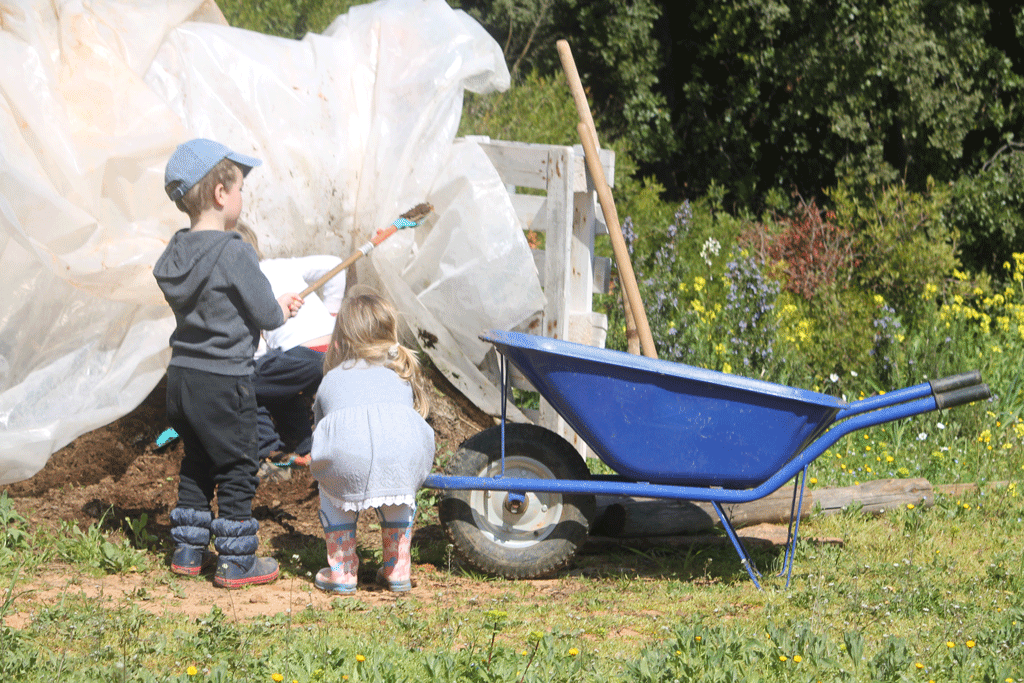
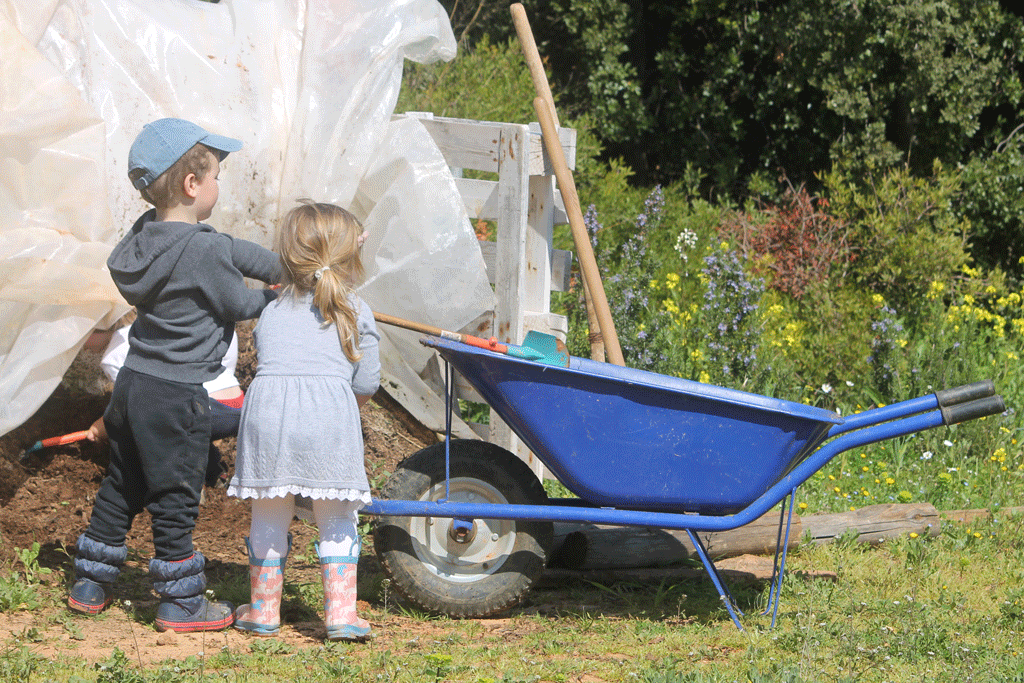




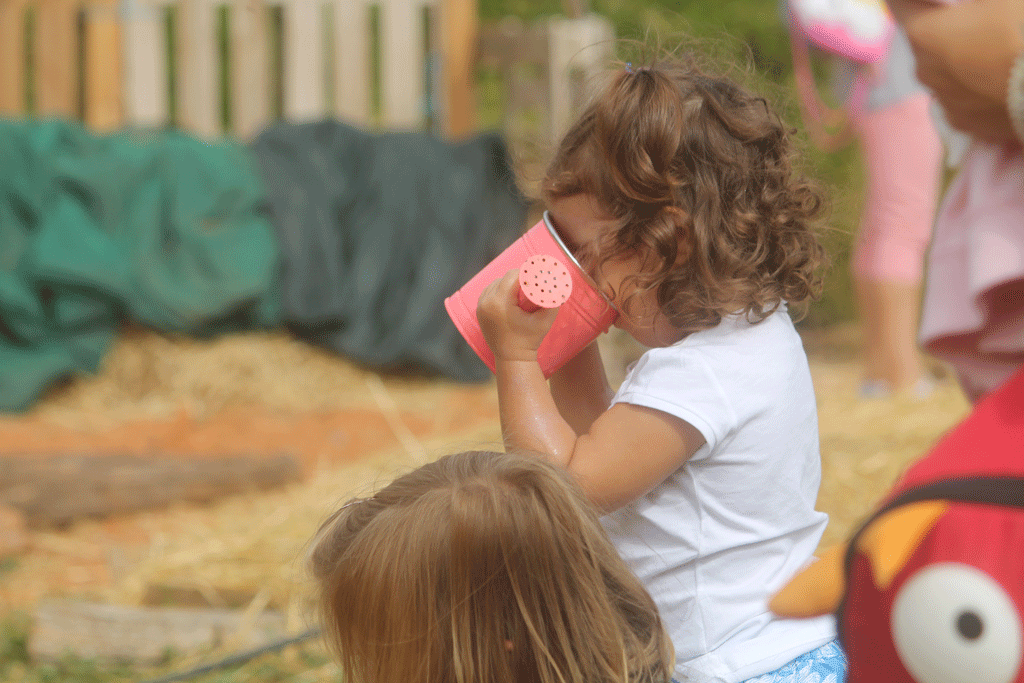

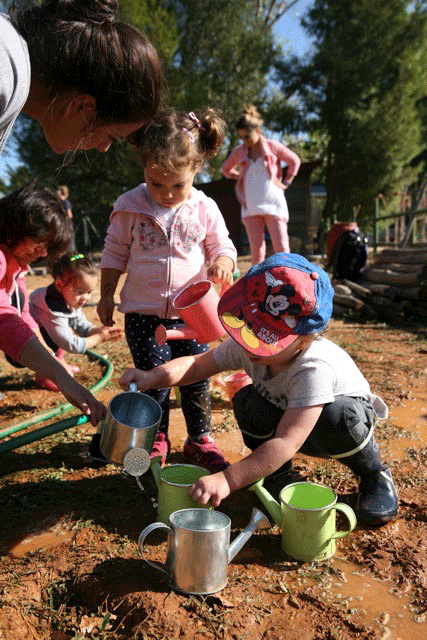


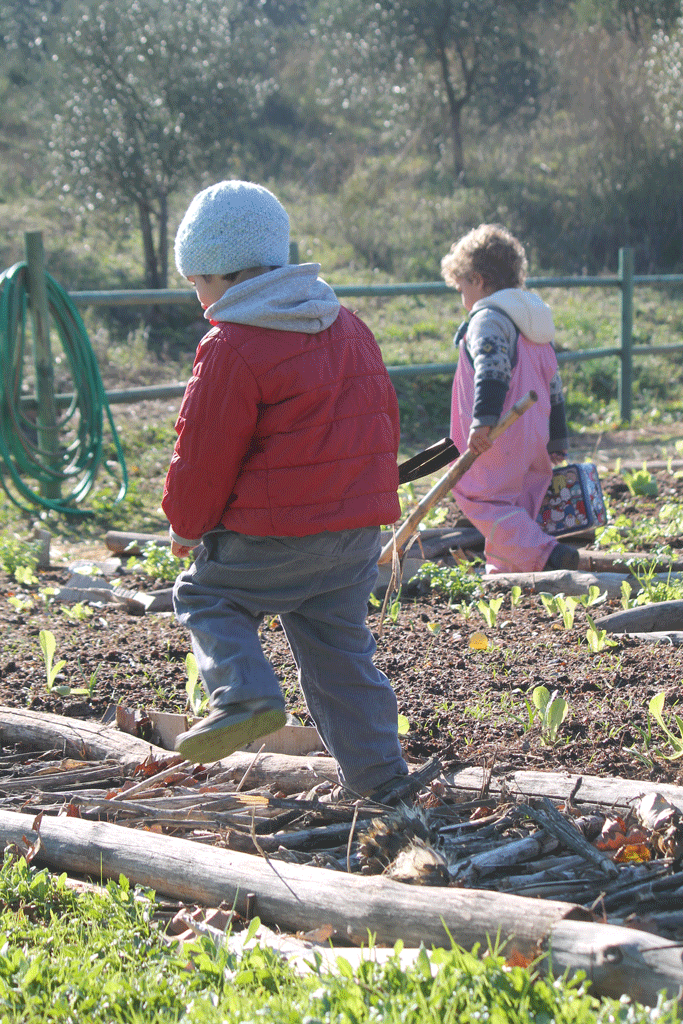



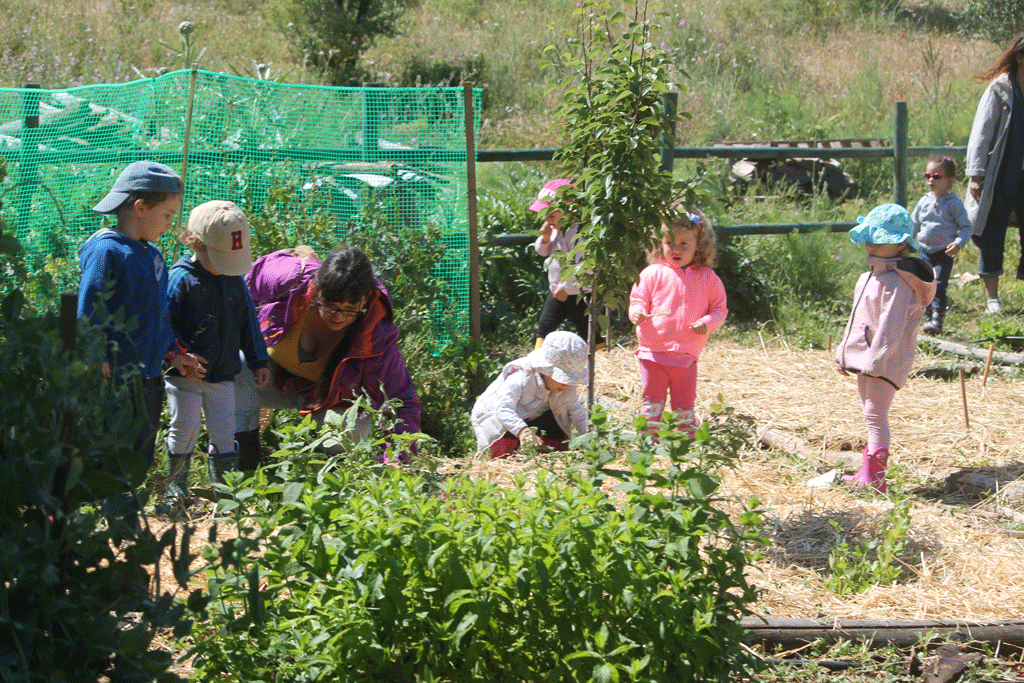











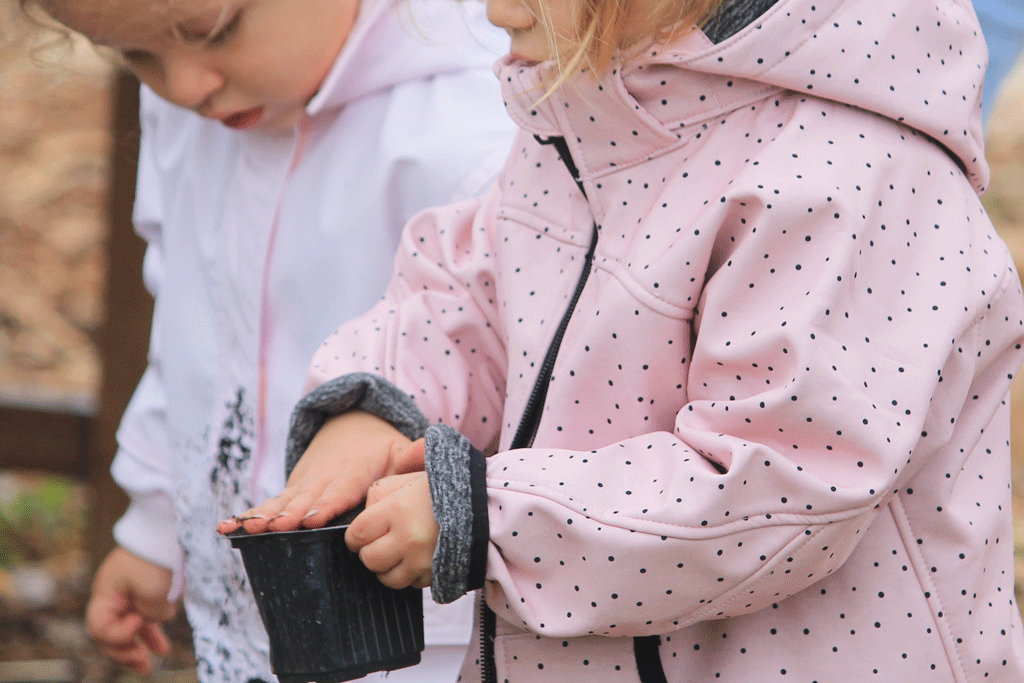

























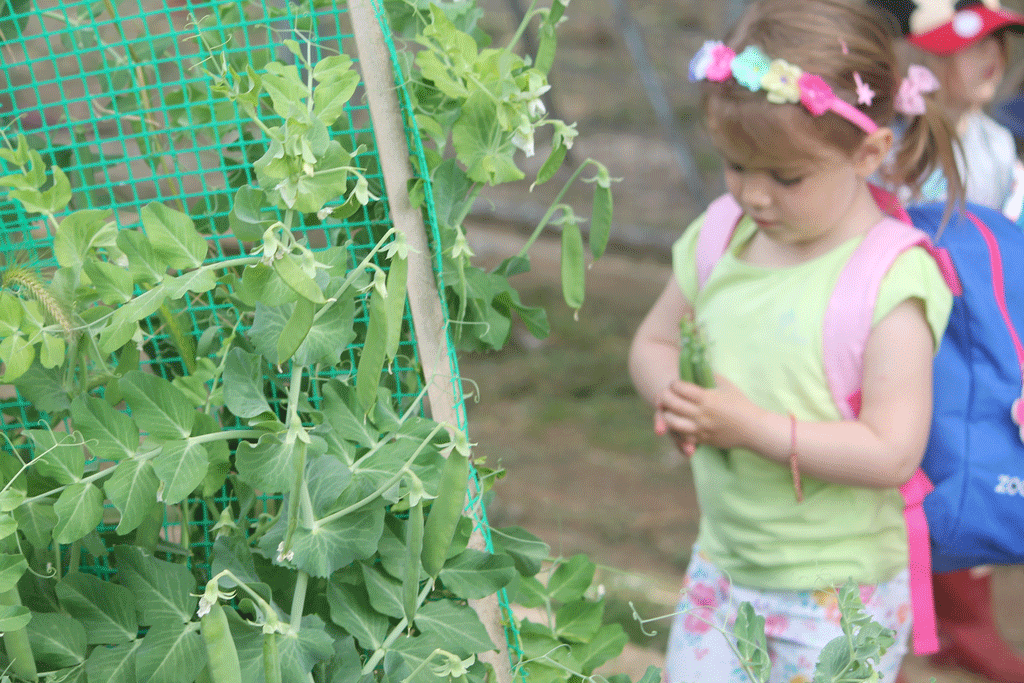









Comments